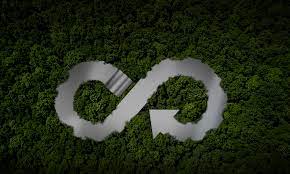Sustainability has taken the centre stage in the manufacturing sector. Interestingly, companies are becoming more environmentally conscious. Read the detailed interview of Jagmohan Sood, Director and CEO, Jindal Stainless (Hissar) with Think ESG’s Editor-in-Chief Renjini Liza Varghese.
Sustainability measures are typically classified under CSR activities, however, Jindal Stainless has been taking major measures in bringing sustainable development at the plant level. What pushed Jindal Stainless towards such initiatives?
The sustainability-related work is happening at the plant site, in the units and in the area of labour. As a group, our focus is to bring down the carbon footprint by all means including the adoption of the best technology. JSL Hisar plant is no different. Being pioneers in bringing out stainless steel in India, the company feels responsible for the environment. Energy efficiency measures are one part of the sustainability measures implemented by the company. It started a decade ago, however, the real momentum was seen in the last three years. We are adhering to all prescribed norms and realised that we can do more, that is when in 2017–18, the campaign for the same started towards energy conservation, renewable energy purchase, sustainable utilisation of natural resources. 264 million units of electricity, and 11.5 Giga kilocalories in thermal energy. If compared to the last consumption period, it is 6% savings for JSL. That translates to a saving of Rs 25.5 crore. The reduction in Co2 emissions is 16000 tonnes. This has brought many accolades to the company from both domestic and international bodies. Our target is to further reduce Co2 emissions by another 6.5% in the next three years (by 2022).
We are planning to include bringing in efficient motors in all plants, efficient lighting solutions, automation of systems, smart energy monitoring systems and energy monitoring system. In terms of use of renewable energy, currently, there is a 0. 68 MW solar PV installed which will be further enhanced to 2 MW capacity. In addition, we will be purchasing more solar power from nearby solar park or from the state grid.
In addition, we are at 1% current in terms of the enhanced use of biofuels, which will be increased to 5% in 3 years.
How much time and investment did it take to make the plant to the current energy-efficient level?
In the last three years, we have invested almost Rs 20 cr in a phased manner and we are planning to invest another Rs 30–40 cr in the next three years targeting to replace inefficient motors, old motors and compressors. We are also planning to bring in more automation, which is a long process and capital-intensive as well. We have set timelines from one year to three years.
Sustainability programmes, as of now, in India, are voluntary initiatives from the entities. Do you think a policy in this regard can bring a major shift in companies attitude towards sustainability programmes?
It differs from company to company. All may not follow the same manner of implementation or adoption. It depends on the culture the company follows, it depends on the management of the company, how much you care for the community, the employees and the stakeholders. Once you start implementing it, you realise the value and the benefits that you get. Those who keep away are ignorant of the benefits.
Do you see an increase in allocation for sustainability programmes?
It automatically happens. We know the benefits. Once you find the benefits, you start investing more and more to reap them the benefits.
Water and carbon emission are equally important elements of sustainability programmes. Can you elaborate on the actions taken by JSL?
Carbon footprint is a key focus area for the company; we switched to biofuels and to futuristic technologies that minimise waste. We are working on other areas which need attention. JSL believes in zero liquid discharge.
When solar capacity is increased to 2MW, what percentage of your energy requirement is met by this?
The existing capacity is from the rooftops; we are planning to cover the entire rooftop and make it 2MW. This will be equivalent to 2% of the total consumption.
Every sustainability programme needs auditing. How does JSL get that done?
Yes, we do have our sustainability programme audited. There are government certified entities that do such auditing work. So, we go with the prescribed parameters when it comes to auditing.
What is your immediate target in the short term?
The effect of sustainability programmes is visible in the medium to long term. So the efforts that are put in now can be measured only at a later stage. Currently, we work with a three-year schedule and it is work in progress. We are trying to get into the new areas of technology to bring the required change. The efforts put in will be measured after three years.




